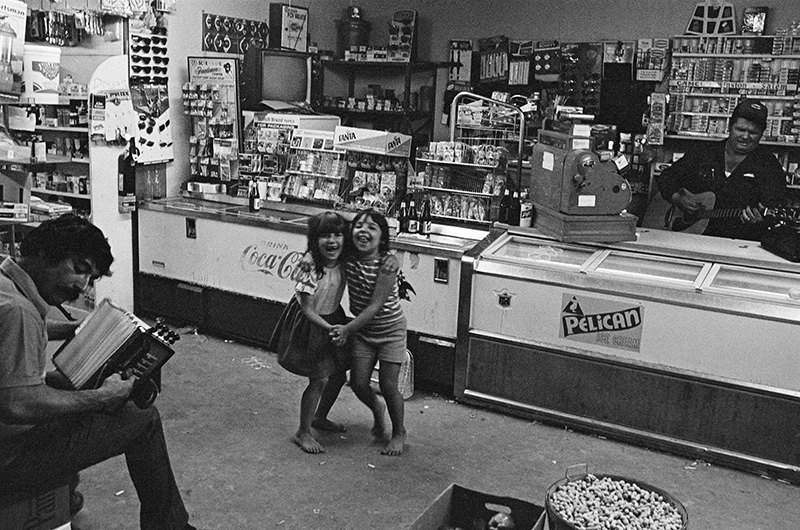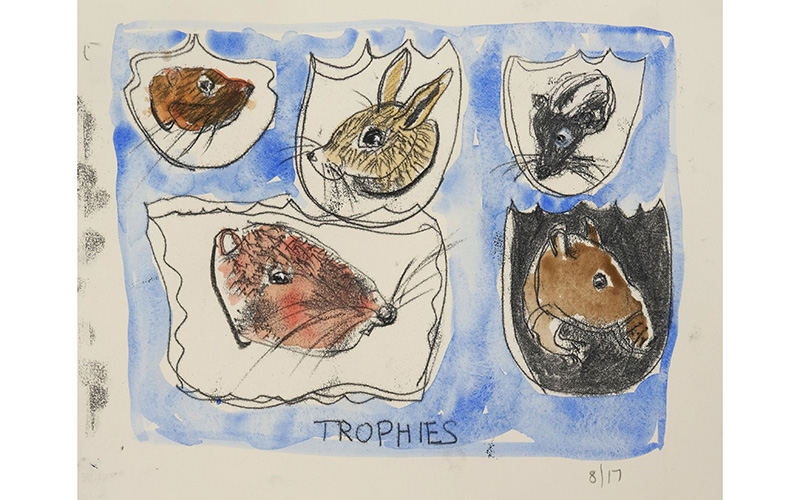Sojourn to Cajun country sparks photography book 45 years later
Feb. 23, 2021 — On a beautiful fall day in the late 1960s, Ron Stanford ’71 recalls hanging out on the North Campus lawn playing folk-music on his guitar with a group of friends. Stanford loved music – he was one of the students in charge of booking concerts for the College – but he was new to playing and not particularly good.
“The group was terrible,” recalls Fay (Hazelcorn) Stanford ’72, “so I went out there to school them.” It was the first time Ron and Fay met. They quickly became inseparable.
Fay, an English major who studied with the late professor Richard T. Cervene ’51 and professor emeritus Merle Zirkle, made posters for campus concerts. Ron, a history major, immersed himself in music, bringing Jackson Browne, Steve Miller, John Prine, Bill Monroe, and other legends to campus.
But it was another band that ended up being the most influential to the Stanfords. During their trip to Grinnell, the Balfa Brothers, a Cajun family that hailed from Basile, Louisiana, told Ron that if he ever wanted to visit, he was welcome in Basile.
The couple got married Fay’s senior year – “with the exception of our parents, we were the only married people we knew,” Fay says – and after graduation were living in Ron’s parents’ basement in Washington, D.C. Job prospects were slim so the two hatched an idea: move to Basile and document the music scene.
Ron called Dewey Balfa and learned the offer still stood. Armed with gift money from their wedding, the couple moved into a small farmhouse for $25 a month. “People were so nice,” says Fay. “Dewey found us the house and other people furnished it. The locals invited us to meals. We were two Yankees, but the fact that we had the Balfa family helping us was a VIP pass.”
 Two girls dance as musicians play in a Louisiana store during the 1970s. The photograph appears in Ron Stanford’s book, Big French Dance: Cajun & Zydeco Music, 1972-74.
Two girls dance as musicians play in a Louisiana store during the 1970s. The photograph appears in Ron Stanford’s book, Big French Dance: Cajun & Zydeco Music, 1972-74.
Ron and Fay applied for and were awarded a National Endowment for the Humanities grant and for the next two years they documented music and culture in and around Basile. Ron took hundreds of black and white photos. The couple also produced a Cajun and Zydeco album, J’étais au Bal (I Went to the Dance), along with a 30-page booklet. The groundbreaking recording showcased black and white musicians together at a time when blacks and whites in southwest Louisiana barely mixed.
“Sometimes it helps to be an outsider,” remarks Fay. “We could get away with making a record like that.”
With the project complete and their grant money spent, they moved back to D.C. and started their family of three sons and a daughter. Ron has spent a career in filmmaking and advertising, while Fay has been a lifelong artist who’s currently focused on printing woodcuts on cotton fabric. Another move brought them to their current home outside Philadelphia, where they’ve lived for more than three decades.
Fay was one of several alumni artists featured in the Nature, Made virtual exhibit at the Grinnell College Museum of Art last spring. The exhibit focused on the natural world, and Fay’s images included robins, hawks, rabbits, deer, squirrels, and other urban animals that she helped nurse back to health at the Philadelphia Metro Wildlife Center. She’s volunteered there for 15 years.
 Trophies is a monotype created by Fay Stanford ’72 that focuses on the natural world.
Trophies is a monotype created by Fay Stanford ’72 that focuses on the natural world.
“Unlike our domesticates, we have no control over these creatures because they are scary and unpredictable. This uncertainty is what attracts me – you’re handling a wild animal and a potentially dangerous one,” she says.
In 2016, Ron re-discovered a huge box of photos from their Basile days. He assembled a batch for an art exhibit in Philadelphia, and then someone suggested he put together a book. This past year, he compiled 100 of the best shots for a book entitled “Big French Dance: Cajun & Zydeco Music, 1972-74.”
“No one paid attention to this music at that time because ‘it was just grandpa playing music,’” Ron explains. “They thought we were just two crazy Yankee hippies. I’m glad that I waited 40 years to put this book out.”
“Before people were aware of how distinct Cajun culture was, they were just living their lives,” says Fay, of the people in Basile. “Music was part of their lives and family gatherings and festivals, and they let us go along with it.”
—by Anne Stein ’84